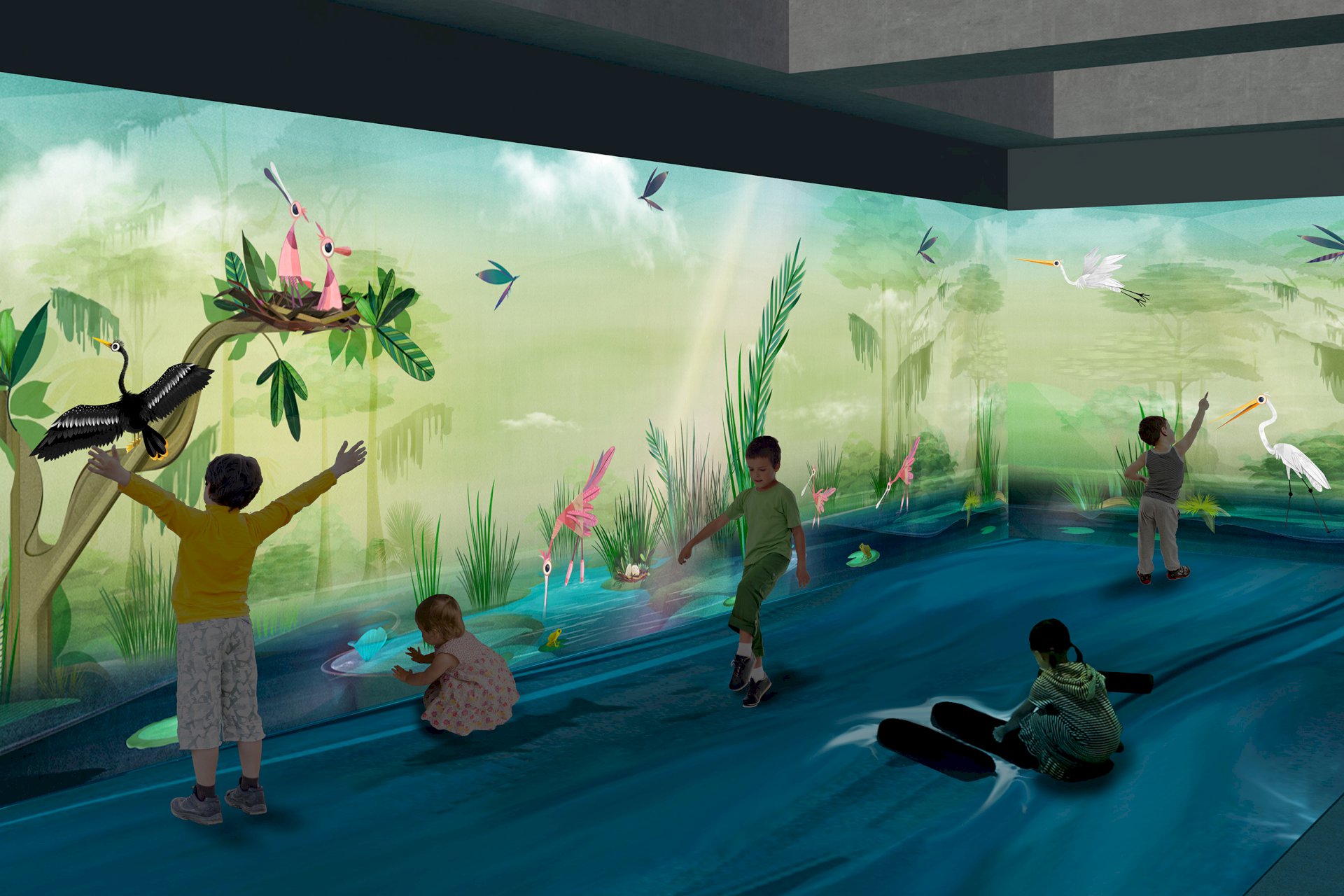Your guide to the new Frost Museum of Science
May,01 2017Opening spring 2017, the Patricia and Phillip Frost Museum of Science is poised to transform Miami's Arts & Entertainment District. Centrally located in downtown Miami's waterfront Museum Park, Frost Science is a leading-edge science museum dedicated to sharing the power of science, sparking wonder and investigation, and fueling innovation for the future. 

The opening of The Patricia and Phillip Frost Museum of Science on May 8th represents one of the biggest milestones in Miami's cultural evolution since the introduction of Art Basel Miami Beach nearly 15 years ago. It is expected to add yet another injection to what is already a booming downtown Miami, representing a $100 million dollar per-year overall economic impact to the county. Over 725,000 visitors and 115,000 local school students annually are predicted, with nearly 40% of the museum's attendance estimated to come from the tourist market, according to a 2015 Study by Consultecon.  
That said, here's everything you need to know about the new Frost Science.  

What to Expect:
Sitting on four acres, the 250,000-square-foot museum divides into four distinct buildings: the Aquarium, the Frost Planetarium, and the North and West Wings. At Frost Science, visitors can explore the science and connections behind living ecosystems, the miraculous human body and mind, the adventure of flight and the wild frontier of innovation and technology.
A few highlights include:
Aquarium 

From Gulf Stream sharks to the tiny organisms within coral, the Aquarium is a trip through the beautiful watery worlds of South Florida. The building works on three levels, beginning on the top ÔÇÿVista' level where you travel the vibrant surface of the Gulf Stream, Mangrove Forests and other wild environments. Descend to the ÔÇÿDive' and ÔÇÿDeep' levels for fantastic underwater views and interactive learning stations.
Frost Planetarium  

One of the most advanced spaces like it in the U.S., the cutting-edge 250-seat Frost Planetarium takes you on visual joyrides that both thrill and educate. The ultra-real immersive experience is the result of a 16-million color 8K visual system using six 3D-capable projectors and surround sound inside the 67-foot dome.
MeLaß
Find out how your daily choices and challenges shape who you are and how you feel, then explore how you can make it all work better. Test your brain, solve puzzles, dance or just chill out ' it's all part of MeLaß.
Feathers to the Stars

Follow the astounding journey of flight, from feathered dinosaurs, to brilliant feats of human ingenuity, to the adventure of future space travel.
River of Grass

A sensory-filled journey celebrating the Everglades, carrying young guests through two related spaces: an outdoor hands-on area, and a hi-tech, indoor virtual Everglades where charming animal characters' frolic and interact, expressing a fun storyline of biodiversity.
LASERsHOW
Experience lasers like never before and learn about the physics of light in an immersive audiovisual environment.
Rooftop Terraces 

The rooftop gives guests access to the power of the elementsÔÇösun, wind and rainÔÇöand collects data to study patterns in the natural systems around us. Acting as a living roof, the terraces showcase native vegetation and urban gardens.
Like most things in Miami, The Patricia and Phillip Frost Museum of Science is possible due to the vision and determination of few. Frost Science, which began as the Junior Museum of Miami, had its genesis in 1949, when a group of women in the Junior League of South Florida recognized the need for a science museum in the region and procured a house on Biscayne Boulevard and 26th Street.
As the 21st century approached, the museum had grown, but Miami was growing faster, tripling in size since its beginnings in 1950. STEM education, too, has emerged as an even more crucial pathway to prosperity. In November 2004, Miami-Dade County voters passed a Building Better Communities General Obligation Bond to create a new Miami Science Museum and in 2009 the City of Miami agreed to lease the museum four acres in Museum Park. Longtime supporters of South Florida's arts and culture, Dr. Phillip and Patricia Frost committed $35 million dollars in 2011 to name the museum at its new home, becoming the Patricia and Phillip Frost Museum of Science. In February of 2012, Frost Science broke ground on its 250,000-square-foot facility in downtown Miami and a few years later the Frosts made an additional $10 million gift to name the new museum's state-of-the-art planetarium, now the Frost Planetarium.
Today, the Frost Science is now a reality of the ever evoling global gateway city known as Miami. The world-class institution will inspire and connect people of all age and backgrounds, helping residents and visitors of Miami to enjoy science and technology, and to better understand themselves and the world we live in. 

Details:
Downtown Site: Museum Park, 1101 Biscayne Boulevard, Miami, FL 33132
Design Architect: Grimshaw Architects
Executive Architect: Rodriguez & Quiroga Architects Chartered
Phone Number: 305.434.9600
Website: FrostScience.org
Membership: If you're interested in purchasing a membership, click here.
 
Recent Posts
In the Cervera Newsroom, our mission is clear: to inform, intrigue, and inspire Miami real estate professionals and consumers.
-
Read more
Miami Real Estate Headlines — Jan. 2, 2023
Miami ranks most diverse city in the world for 2022; foreign homebuyer sales surge 34%; and ...
-
Read more
Miami Real Estate Headlines — Dec. 12, 2022
Miami ranks third most popular city for US relocations; the 2023 regional South Florida real ...
-
Read more
Miami Real Estate Headlines — Nov. 13, 2022
Citadel billionaire founder Ken Griffin says it wasn’t low taxes that led him to move his ...
-
Read more
Miami Real Estate Headlines — Nov. 6, 2022
Grammy Award-winning recording artist Future makes his presence known in Miami ...

